Compelling product descriptions are so underrated.
Product descriptions are little slices of marketing copy on a product page. An ecommerce business will have lots of product descriptions — one for every item, really. But it’s good for service providers, creators, and professionals to master product description writing, too. When you’re able to communicate technical details succinctly, you’ll see more activity in your online store or signup pages.
Boring product descriptions are probably also costing you money. One in five abandoned purchases are due to a lack of information in the product description, according to a report published by Nielsen Norman Group, a UX research company.
Key Takeaways
- Product descriptions need to appeal to emotion, but also land the facts and figures of your product.
- You have limited space in a product description, so you must be succinct.
- Remember that users on the internet tend to skim. Make your product description easy to read.
A great way to learn how to write persuasive product descriptions is to see a successful ecommerce store in action. In this post, we’ll go over 11 quick tips to punch up your copywriting skills, along with a great product description example for each.
What Is a Product Description?
A product description refers to marketing copy that lives on the same page as your product. Product descriptions help describe product details and key benefits to your potential buyers.
They also are an opportunity to incorporate great SEO keywords, which can improve your organic search rankings in search engines like Google. If you’re trying to get your offer discovered by people looking via search engines, product titles and great product descriptions will be key.
Apple is famously good at product descriptions. On any given product page, they outline technical details and specs in a beautiful, succinct way. Apple’s entire website is obviously a custom design, and would be challenging for you and I to replicate, but it’s helpful to see how a large brand organizes relevant information.
Throughout this post, I’ll be referencing this screenshot of one of Apple’s product pages, the Mac Mini, as well as some other ecommerce site product descriptions. Here’s the screenshot in its entirety to get us all on the same page.

Here are 11 tips to help you write product descriptions that sell your ideal customer on your offer.
11 Tips for Writing Product Descriptions That Sell
- Describe product features.
- Explain the product benefits.
- Refer back to your buyer persona.
- Appeal to how potential customers talk.
- Think about search engine optimization.
- Establish a brand voice.
- Study great marketing copy.
- Use power words to spice things up.
- Stick to short paragraphs and bullet points.
- Mention mundane features, but perhaps less prominently.
- Align with your product images.
No. 1: Describe Product Features.
Think about when you watch a car commercial. The narrator describes the leather interior, the horsepower of the engine, and the four-wheel drive. These are product features, and your product pages need to be chock full of them to appeal to your potential customer.
Apple does this nicely in their product page. In this section, the company describes the port features of the Mac Mini.
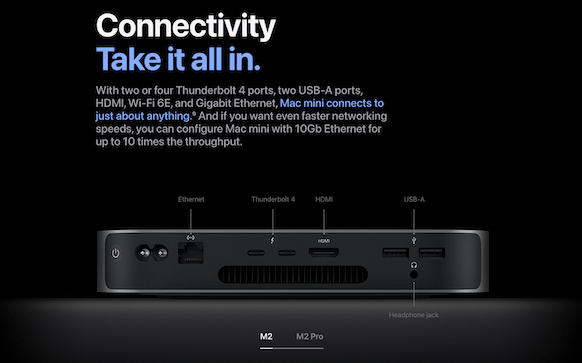
Here's another example from Red Wing Shoes, an American company known for their high-quality boots. Notice how some of the description of the Iron Ranger boot is used to mention technical components, projecting quality.
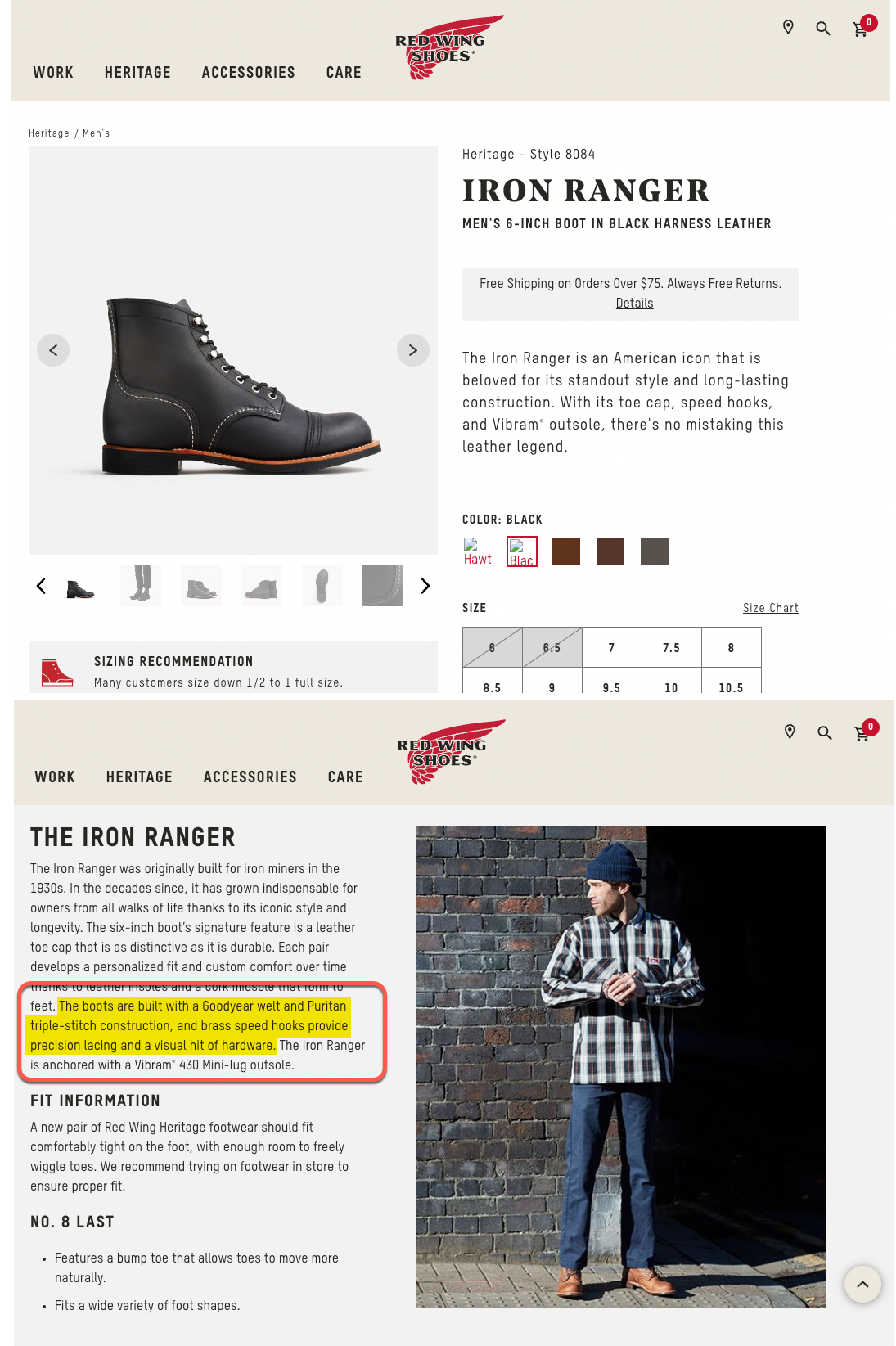
No. 2: Explain the Product Benefits.
“But isn’t this the same as ‘product features?’” Nope. Features and benefits are slightly different.
Features refer to the components of a product. Benefits refer to what those components will do for you or make possible for you. While it’s important to show product quality, it’s also important that you appeal to your potential buyer and what their desired outcomes are. Benefits help your product descriptions pop in the mind of your ideal customer.
In our Apple product page, a section on compatibility talks first about a feature, Stage Manager, but then dives into what that feature will let you do. This is benefits copy.
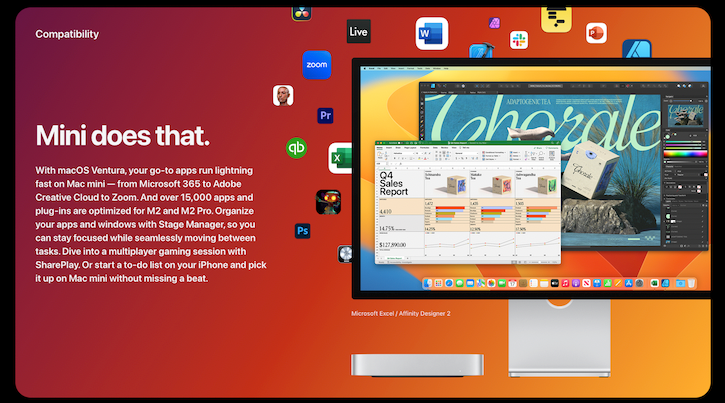
No. 3: Refer Back to Your Buyer Persona.
As you write product descriptions, think carefully about what your target audience really wants. Don’t appeal to just any person who clicks on your product title. Write product descriptions that speak to only one or two buyer personas at a time.
In one section of Apple's page, the company appeals to the minimal environmental impact of its product.
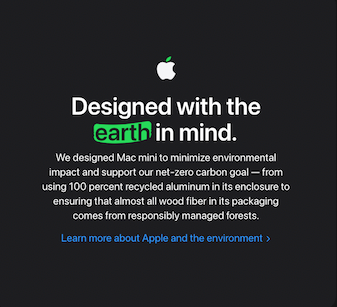
No. 4: Appeal to How Potential Customers Talk.
People want to purchase from brands that they see themselves in. Your product descriptions can be a great opportunity to relate to your readers and build brand affinity. Not every user will purchase a product on the spot, but the way you made them feel while they visited your site is a brand play, and may inspire them to come back and complete the purchase later.
No. 5: Think About Search Engine Optimization.
I mentioned this earlier, but it beats repeating: if your plan is for people to discover you via search engines like Google, you need to incorporate SEO into your product description template.
SEO applies to product pages, product titles, and product descriptions within your online store. When Google crawls a website page, it uses the language on that page to explain what the resource is about. More importantly, SEO helps you measure which pages are getting seen and which ones aren’t, which can help you with conversion rate optimization (CRO).
No. 6: Establish a Brand Voice.
Great brand stories are what make customers purchase again and again from a business. As you’re writing product descriptions, think about how you can describe a product feature in a way that also aligns with your overall brand.
For example, let’s say you were selling clothing online. If you were describing the item to a friend, would that change the way you talk about it? Think about how you can make your descriptions more conversational.
In this example, swimwear retailer Chubbies uses a catchy lead sentence that is both sharp and silly. The cheekiness of it is an expression of the overall brand voice, allowing the brand to pack a punch in just a couple of sentences.
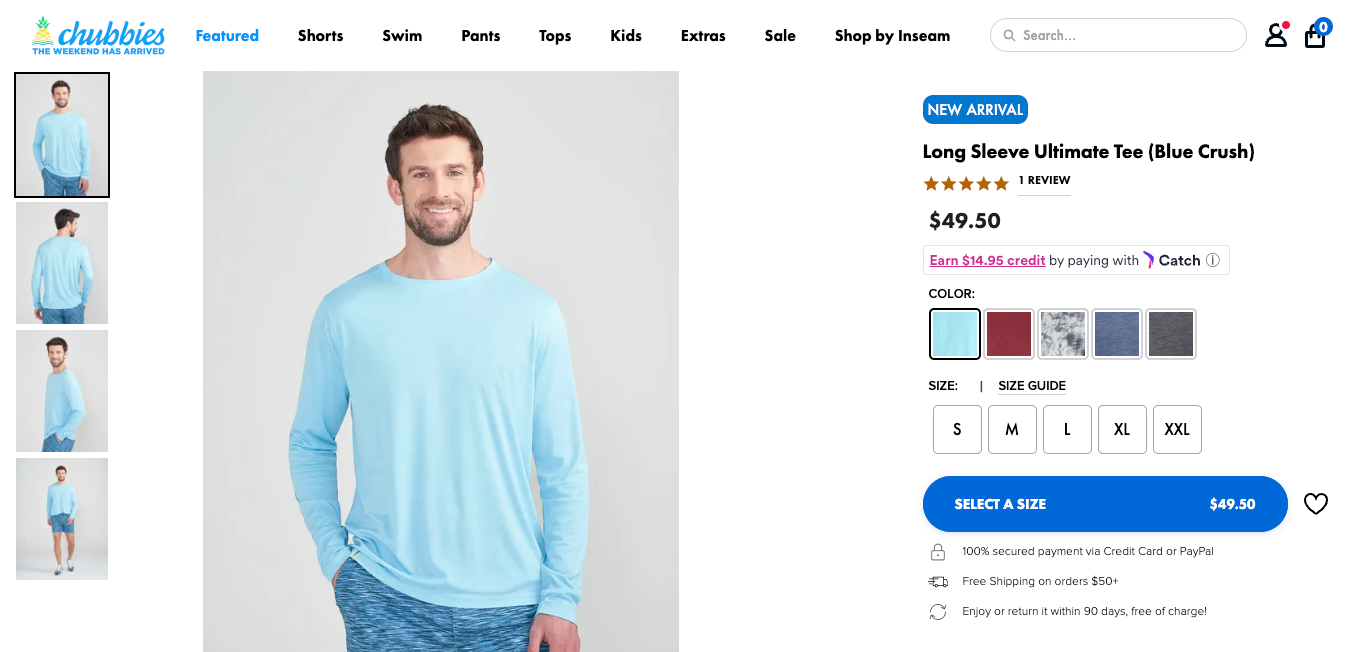
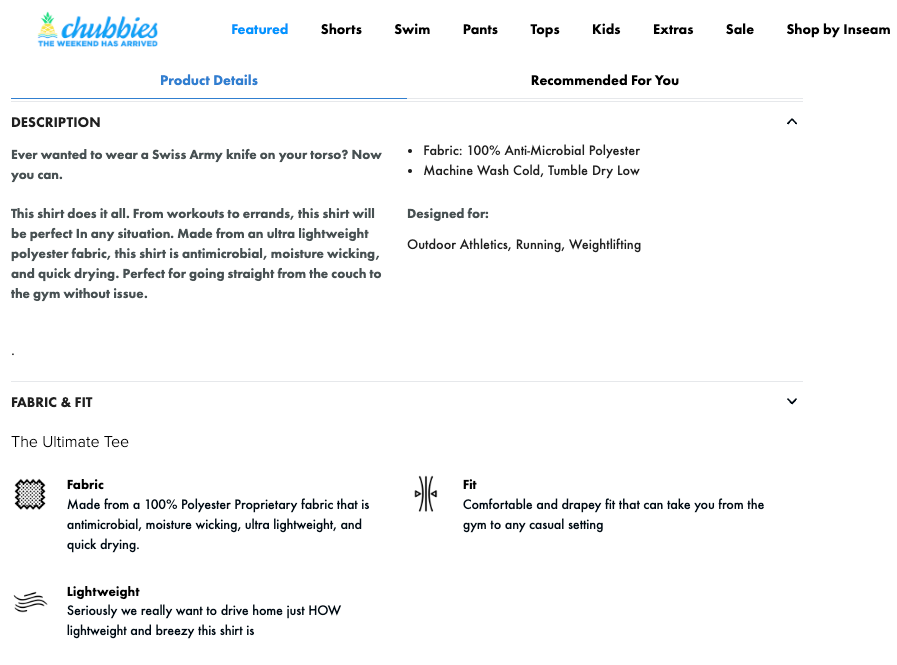
No. 7: Study Great Marketing Copy.
Reading this article right now will help you write great product descriptions!
Look around on the internet to see product description examples from other online businesses. Bonus points if you research your market competitors along the way. For many of us, seeing past success stories or effective product descriptions from other ecommerce sites is enough to steer us in the right direction and begin writing.
Also take some time to study and master the basics of advertising copy. Ad copy has been around for over 100 years, and the rules of marketing persuasion have gone largely unchanged.
Related: Copywriting for Entrepreneurs: 10 Tricks for More Clicks
No. 8: Use Power Words to Spice Things Up.
Power words and sensory language are great ways to add punch to your product description writing.
Power words are bold, strong adjectives that give your copy more confidence. Sensory words are adjectives or descriptions that evoke emotion. Sensory language can activate the emotional side of your reader’s brain, making them more engaged and interested.
In Apple's description, one card boasts "towering performance", showcasing the product's power and speed.

No. 9: Stick to Short Paragraphs and Bullet Points.
Whenever possible, package the key features, technical specs, and/or social proof about your product description into easy-to-skim formats.
Target customers will browse your products or offers. It’s unlikely that they will read every single word on the first pass. We want to first help our potential buyers become acquainted with the product description page and how information is organized.
- Bullets are a great way to break up blocks of text.
- When possible, try to include three or more bullets in a set.
- See what I did just now?
Bullets are the easiest way to split out product features, but if your web design allows it, you could also split these out with tabs.
No. 10: Mention Mundane Features, But Perhaps Less Prominently.
I get it — not all your product details are sexy and impressive. To engage your target audience, however, you will need to include these technical details somewhere in the product copy. Some ideal customers take a “fact finder” approach to a purchase decision; seeing thorough, detailed descriptions helps to establish trust and project quality to these users.
No. 11: Align With Your Product Images.
High-quality product images are incredibly important for ecommerce businesses, and they’re pretty damn important for service providers and creators, too.
When you have great imagery, writing product descriptions is a breeze. Simply describe what’s in the image! Also reinforce the benefits: why people should care, and what’s in it for them. If you’re feeling stuck, aligning copy with imagery can act as a foolproof product description template.
Product Description FAQ
What is a good product description example?
Good product descriptions typically include a summary of the product’s benefits and features in a short paragraph. Writing product descriptions that are clear can also help with search engine visibility.
How do you write a strong product description?
A good product description will incorporate both factual details and emotion-stirring descriptions. Ground your description in facts and figures, but also remind readers what result buying your product will create.
What should be included in a product description?
A clear product title and certain words that will show up in search results are key. Consider also incorporating social proof into the product description.
Does my sales page or sales letter need a product description?
Product descriptions are powerful for any online business. Focus your product copy on one particular ideal client avatar to keep things focused and structured.
Final Takeaways
Product descriptions are a category of copywriting that yield above-average returns. Describe your products in a clear, concise way, and you’ll see more users sign up as a result. ◆
Thanks for Reading 🙏🏼
Keep up the momentum with one or more of these next steps:
📣 Share this post with your network or a friend. Sharing helps spread the word, and posts are formatted to be both easy to read and easy to curate – you'll look savvy and informed.
📲 Hang out with me on another platform. I'm active on Medium, Instagram, and LinkedIn – if you're on any of those, say hello.
📬 Sign up for my free email list. This is where my best, most exclusive and most valuable content gets published. Use any of the signup boxes on the site.
🏕 Up your writing game: Camp Wordsmith® is a free online resources portal all about writing and media. Get instant access to resources and templates guaranteed to make your marketing hustle faster, better, easier, and more fun. Sign up for free here.
📊 Hire me for consulting. I provide 1-on-1 consultations through my company, Hefty Media Group. We're a certified diversity supplier with the National Gay & Lesbian Chamber of Commerce. Learn more here.


